Talha Iqbal
Review on Classification Techniques used in Biophysiological Stress Monitoring
Oct 28, 2022Abstract:Cardiovascular activities are directly related to the response of a body in a stressed condition. Stress, based on its intensity, can be divided into two types i.e. Acute stress (short-term stress) and Chronic stress (long-term stress). Repeated acute stress and continuous chronic stress may play a vital role in inflammation in the circulatory system and thus leads to a heart attack or to a stroke. In this study, we have reviewed commonly used machine learning classification techniques applied to different stress-indicating parameters used in stress monitoring devices. These parameters include Photoplethysmograph (PPG), Electrocardiographs (ECG), Electromyograph (EMG), Galvanic Skin Response (GSR), Heart Rate Variation (HRV), skin temperature, respiratory rate, Electroencephalograph (EEG) and salivary cortisol, used in stress monitoring devices. This study also provides a discussion on choosing a classifier, which depends upon a number of factors other than accuracy, like the number of subjects involved in an experiment, type of signals processing and computational limitations.
Coconut trees detection and segmentation in aerial imagery using mask region-based convolution neural network
May 10, 2021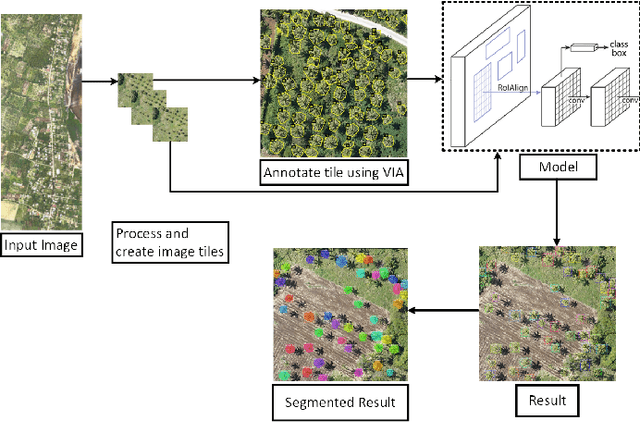
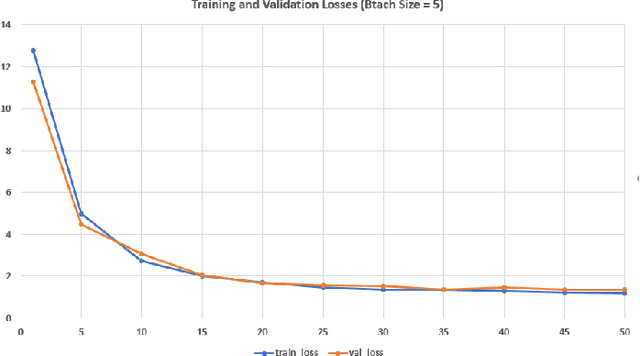
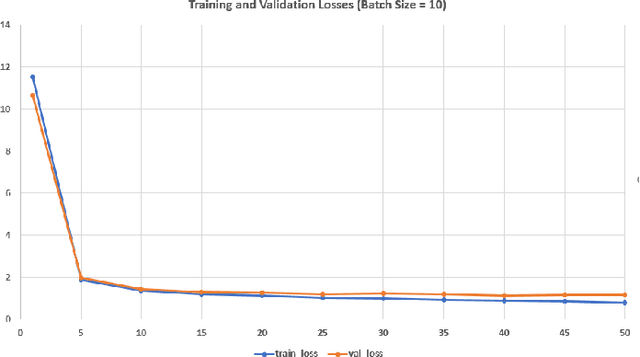
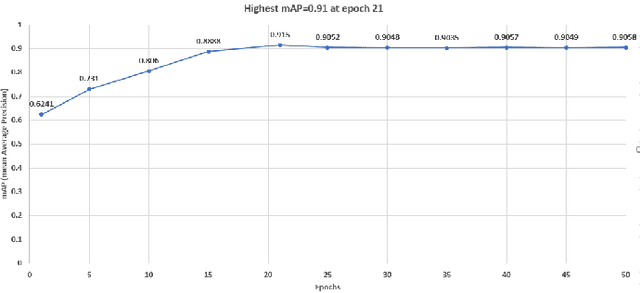
Abstract:Food resources face severe damages under extraordinary situations of catastrophes such as earthquakes, cyclones, and tsunamis. Under such scenarios, speedy assessment of food resources from agricultural land is critical as it supports aid activity in the disaster hit areas. In this article, a deep learning approach is presented for the detection and segmentation of coconut tress in aerial imagery provided through the AI competition organized by the World Bank in collaboration with OpenAerialMap and WeRobotics. Maked Region-based Convolutional Neural Network approach was used identification and segmentation of coconut trees. For the segmentation task, Mask R-CNN model with ResNet50 and ResNet1010 based architectures was used. Several experiments with different configuration parameters were performed and the best configuration for the detection of coconut trees with more than 90% confidence factor was reported. For the purpose of evaluation, Microsoft COCO dataset evaluation metric namely mean average precision (mAP) was used. An overall 91% mean average precision for coconut trees detection was achieved.
Segmentation of Lungs in Chest X-Ray Image Using Generative Adversarial Networks
Sep 12, 2020



Abstract:Chest X-ray (CXR) is a low-cost medical imaging technique. It is a common procedure for the identification of many respiratory diseases compared to MRI, CT, and PET scans. This paper presents the use of generative adversarial networks (GAN) to perform the task of lung segmentation on a given CXR. GANs are popular to generate realistic data by learning the mapping from one domain to another. In our work, the generator of the GAN is trained to generate a segmented mask of a given input CXR. The discriminator distinguishes between a ground truth and the generated mask, and updates the generator through the adversarial loss measure. The objective is to generate masks for the input CXR, which are as realistic as possible compared to the ground truth masks. The model is trained and evaluated using four different discriminators referred to as D1, D2, D3, and D4, respectively. Experimental results on three different CXR datasets reveal that the proposed model is able to achieve a dice-score of 0.9740, and IOU score of 0.943, which are better than other reported state-of-the art results.
* Volume 8, August 2020, Pages 153535 - 153545
Pioneer dataset and automatic recognition of Urdu handwritten characters using a deep autoencoder and convolutional neural network
Dec 17, 2019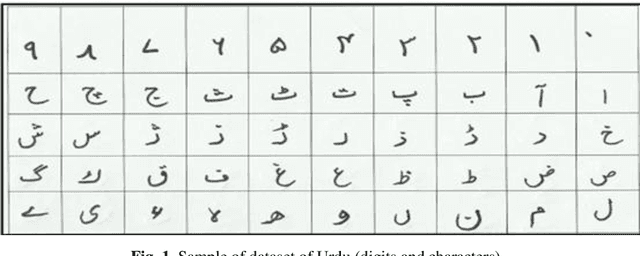
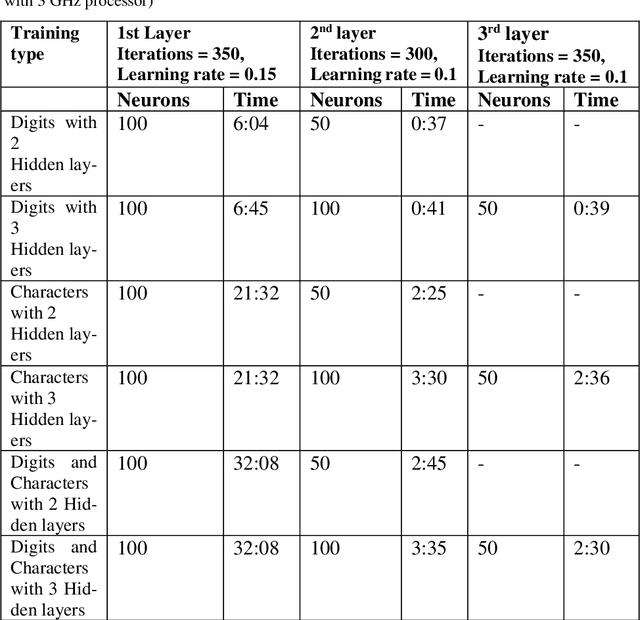
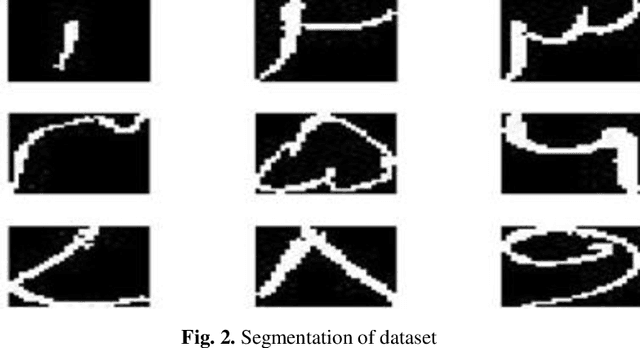
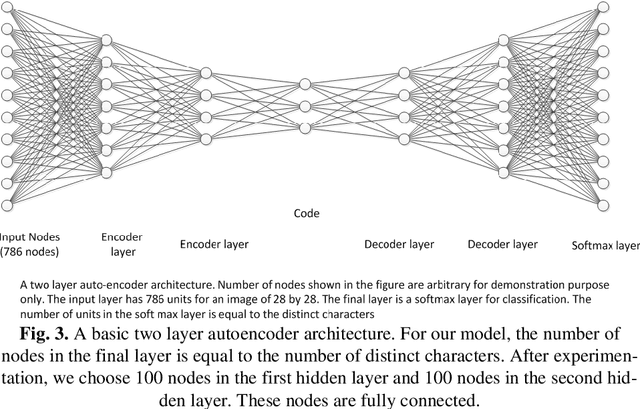
Abstract:Automatic recognition of Urdu handwritten digits and characters, is a challenging task. It has applications in postal address reading, bank's cheque processing, and digitization and preservation of handwritten manuscripts from old ages. While there exists a significant work for automatic recognition of handwritten English characters and other major languages of the world, the work done for Urdu lan-guage is extremely insufficient. This paper has two goals. Firstly, we introduce a pioneer dataset for handwritten digits and characters of Urdu, containing samples from more than 900 individuals. Secondly, we report results for automatic recog-nition of handwritten digits and characters as achieved by using deep auto-encoder network and convolutional neural network. More specifically, we use a two-layer and a three-layer deep autoencoder network and convolutional neural network and evaluate the two frameworks in terms of recognition accuracy. The proposed framework of deep autoencoder can successfully recognize digits and characters with an accuracy of 97% for digits only, 81% for characters only and 82% for both digits and characters simultaneously. In comparison, the framework of convolutional neural network has accuracy of 96.7% for digits only, 86.5% for characters only and 82.7% for both digits and characters simultaneously. These frameworks can serve as baselines for future research on Urdu handwritten text.
Generative Adversarial Network for Medical Images (MI-GAN)
Oct 01, 2018



Abstract:Deep learning algorithms produces state-of-the-art results for different machine learning and computer vision tasks. To perform well on a given task, these algorithms require large dataset for training. However, deep learning algorithms lack generalization and suffer from over-fitting whenever trained on small dataset, especially when one is dealing with medical images. For supervised image analysis in medical imaging, having image data along with their corresponding annotated ground-truths is costly as well as time consuming since annotations of the data is done by medical experts manually. In this paper, we propose a new Generative Adversarial Network for Medical Imaging (MI-GAN). The MI-GAN generates synthetic medical images and their segmented masks, which can then be used for the application of supervised analysis of medical images. Particularly, we present MI-GAN for synthesis of retinal images. The proposed method generates precise segmented images better than the existing techniques. The proposed model achieves a dice coefficient of 0.837 on STARE dataset and 0.832 on DRIVE dataset which is state-of-the-art performance on both the datasets.
 Add to Chrome
Add to Chrome Add to Firefox
Add to Firefox Add to Edge
Add to Edge